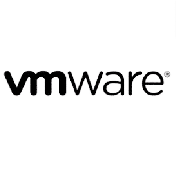Seminarinhalt
Dieses Seminar zeigt Ihnen, wie Sie die Cisco® Web Security Appliance (WSA), powered by Cisco Talos, implementieren, verwenden und warten, um einen erweiterten Schutz für geschäftliche E-Mails und andere Sicherheitsbedrohungen zu gewährleisten. Durch eine Kombination aus Expertenanweisungen und praktischen Übungen lernen Sie, wie Sie Proxy-Dienste bereitstellen, Authentifizierung verwenden, Richtlinien zur Steuerung des HTTPS-Verkehrs und -Zugriffs implementieren, Steuerungseinstellungen und -Richtlinien implementieren, Anti-Malware-Funktionen der Lösung verwenden und implementieren, Verhinderung von Datenverlust, Verwaltung der Cisco WSA-Lösung und vieles mehr.
Nach Abschluss des Seminars haben die Teilnehmer*innen Kenntnisse zu folgenden Themen:
Nach Abschluss des Seminars haben die Teilnehmer*innen Kenntnisse zu folgenden Themen:
- Beschreiben von Cisco WSA
- Bereitstellung von Proxy-Diensten
- Authentifizierung verwenden
- Beschreiben von Entschlüsselungsrichtlinien zur Steuerung des HTTPS-Verkehrs
- Verstehen von differenzierten Zugriffsrichtlinien und Identifikationsprofilen
- Erzwingen von Einstellungen für die akzeptable Verwendung
- Verteidigung gegen Malware
- Beschreiben der Datensicherheit und Verhinderung von Datenverlust
- Durchführung der Administration und Fehlerbehebung
Programm
Describing Cisco WSA
Deploying Proxy Services
Utilizing Authentication
Creating Decryption Policies to Control HTTPS Traffic
Understanding Differentiated Traffic Access Policies and Identification Profiles
Defending Against Malware
Enforcing Acceptable Use Control Settings
Data Security and Data Loss Prevention
Performing Administration and Troubleshooting
References
- Technology Use Case
- Cisco WSA Solution
- Cisco WSA Features
- Cisco WSA Architecture
- Proxy Service
- Integrated Layer 4 Traffic Monitor
- Data Loss Prevention
- Cisco Cognitive Intelligence
- Management Tools
- Cisco Advanced Web Security Reporting (AWSR) and Third-Party Integration
- Cisco Content Security Management Appliance (SMA)
Deploying Proxy Services
- Explicit Forward Mode vs. Transparent Mode
- Transparent Mode Traffic Redirection
- Web Cache Control Protocol
- Web Cache Communication Protocol (WCCP) Upstream and Downstream Flow
- Proxy Bypass
- Proxy Caching
- Proxy Auto-Config (PAC) Files
- FTP Proxy
- Socket Secure (SOCKS) Proxy
- Proxy Access Log and HTTP Headers
- Customizing Error Notifications with End User Notification (EUN) Pages
Utilizing Authentication
- Authentication Protocols
- Authentication Realms
- Tracking User Credentials
- Explicit (Forward) and Transparent Proxy Mode
- Bypassing Authentication with Problematic Agents
- Reporting and Authentication
- Re-Authentication
- FTP Proxy Authentication
- Troubleshooting Joining Domains and Test Authentication
- Integration with Cisco Identity Services Engine (ISE)
Creating Decryption Policies to Control HTTPS Traffic
- Transport Layer Security (TLS)/Secure Sockets Layer (SSL) Inspection Overview
- Certificate Overview
- Overview of HTTPS Decryption Policies
- Activating HTTPS Proxy Function
- Access Control List (ACL) Tags for HTTPS Inspection
- Access Log Examples
Understanding Differentiated Traffic Access Policies and Identification Profiles
- Overview of Access Policies
- Access Policy Groups
- Overview of Identification Profiles
- Identification Profiles and Authentication
- Access Policy and Identification Profiles Processing Order
- Other Policy Types
- Access Log Examples
- ACL Decision Tags and Policy Groups
- Enforcing Time-Based and Traffic Volume Acceptable Use Policies, and End User Notifications
Defending Against Malware
- Web Reputation Filters
- Anti-Malware Scanning
- Scanning Outbound Traffic
- Anti-Malware and Reputation in Policies
- File Reputation Filtering and File Analysis
- Cisco Advanced Malware Protection
- File Reputation and Analysis Features
- Integration with Cisco Cognitive Intelligence
Enforcing Acceptable Use Control Settings
- Controlling Web Usage
- URL Filtering
- URL Category Solutions
- Dynamic Content Analysis Engine
- Web Application Visibility and Control
- Enforcing Media Bandwidth Limits
- Software as a Service (SaaS) Access Control
- Filtering Adult Content
Data Security and Data Loss Prevention
- Data Security
- Cisco Data Security Solution
- Data Security Policy Definitions
- Data Security Logs
Performing Administration and Troubleshooting
- Monitor the Cisco Web Security Appliance
- Cisco WSA Reports
- Monitoring System Activity Through Logs
- System Administration Tasks
- Troubleshooting
- Command Line Interface
References
- Comparing Cisco WSA Models
- Comparing Cisco SMA Models
- Overview of Connect, Install, and Configure
- Deploying the Cisco Web Security Appliance Open Virtualization Format (OVF) Template
- Mapping Cisco Web Security Appliance Virtual Machine (VM) Ports to Correct Networks
- Connecting to the Cisco Web Security Virtual Appliance
- Enabling Layer 4 Traffic Monitor (L4TM)
- Accessing and Running the System Setup Wizard
- Reconnecting to the Cisco Web Security Appliance
- High Availability Overview
- Hardware Redundancy
- Introducing Common Address Redundancy Protocol (CARP)
- Configuring Failover Groups for High Availability
- Feature Comparison Across Traffic Redirection Options
- Architecture Scenarios When Deploying Cisco AnyConnect® Secure Mobility
Zielgruppen
- Security Architects
- System Designers
- Network Administrators
- Operations Engineers
- Network Managers, Network oder Security Technicians, und Security Engineers und Manager*innen, die für die Web Security verantwortlich sind
- Cisco Integrators und Partner*innen
Vorkenntnisse
- TCP / IP-Dienste, einschließlich DNS (Domain Name System), SSH (Secure Shell), FTP, SNMP (Simple Network Management Protocol), HTTP und HTTPS
- IP-Routing
Sie sollten über eine oder mehrere der folgenden technischen Grundkompetenzen oder gleichwertige Kenntnisse verfügen:
- Cisco-Zertifizierung (CCENT-Zertifizierung oder höher)
- Relevante Branchenzertifizierung [International Information System Security Certification Consortium ((ISC) 2), Verband der IT-Industrie (CompTIA) Security +, Internationaler Rat der Berater für den elektronischen Handel (EC-Council), Global Information Assurance Certification (GIAC), ISACA]
- Abschlussbestätigung der Cisco Networking Academy (CCNA® 1 und CCNA 2)
- Windows-Kenntnisse: Microsoft [Microsoft-Spezialist, Microsoft Certified Solutions Associate (MCSA), Microsoft Certified Solutions Expert (MCSE)], CompTIA (A +, Network +, Server +)
Wichtige Information
Dieser Kurs bereitet Sie auf die Prüfung Securing the Web with Cisco Web Security Appliance (300-725 SWSA) vor, die zu den neuen Zertifizierungen CCNP Security und Cisco Certified Specialist - Web Content Security führt.


